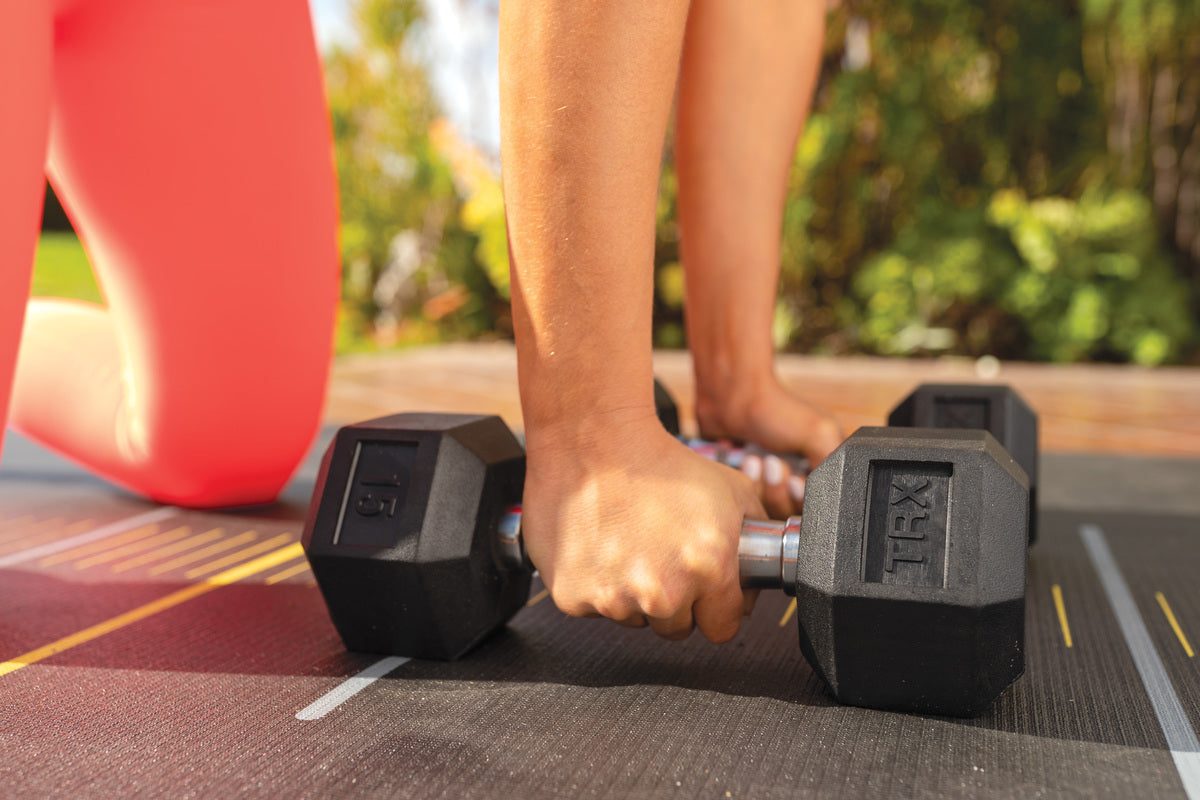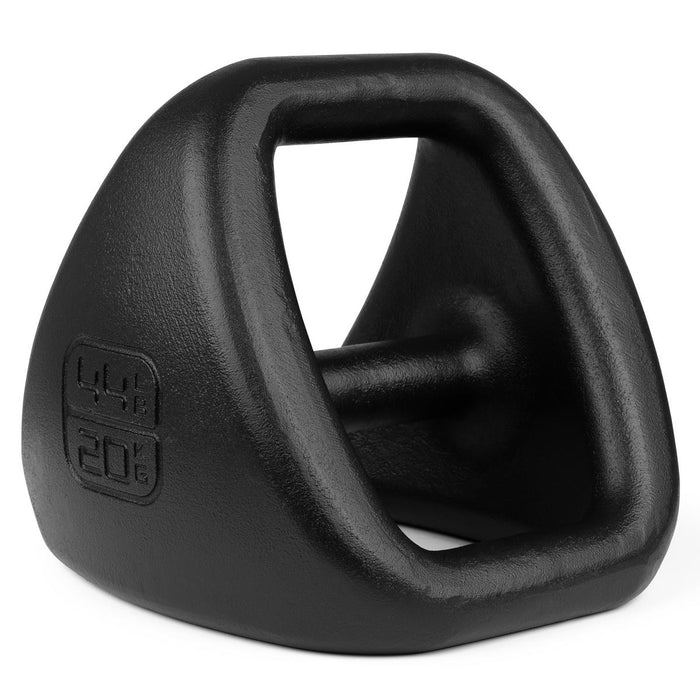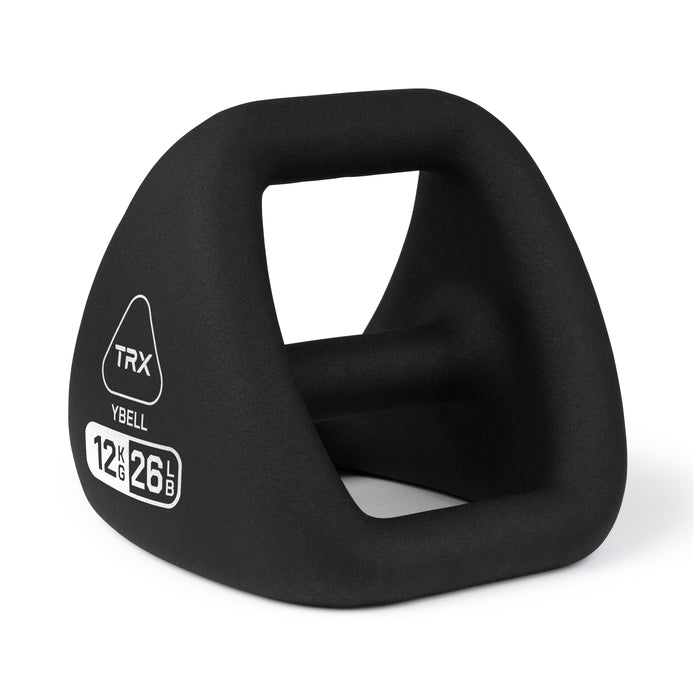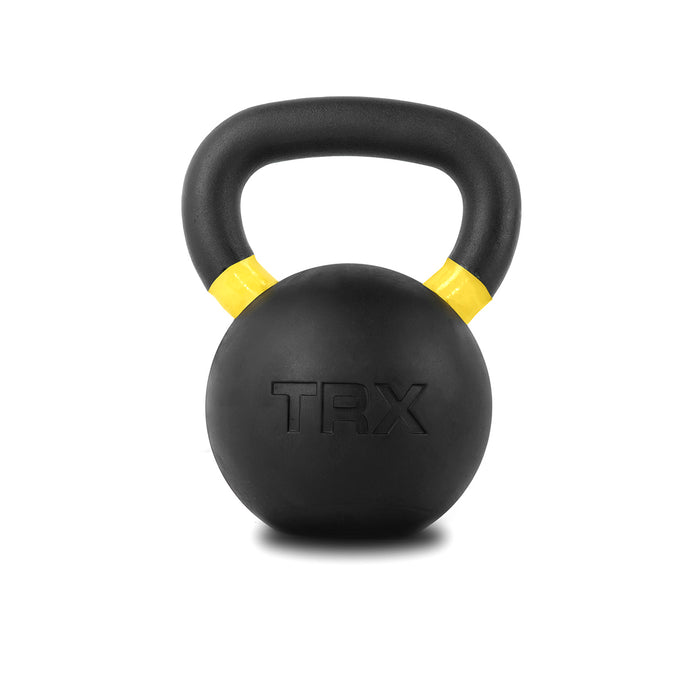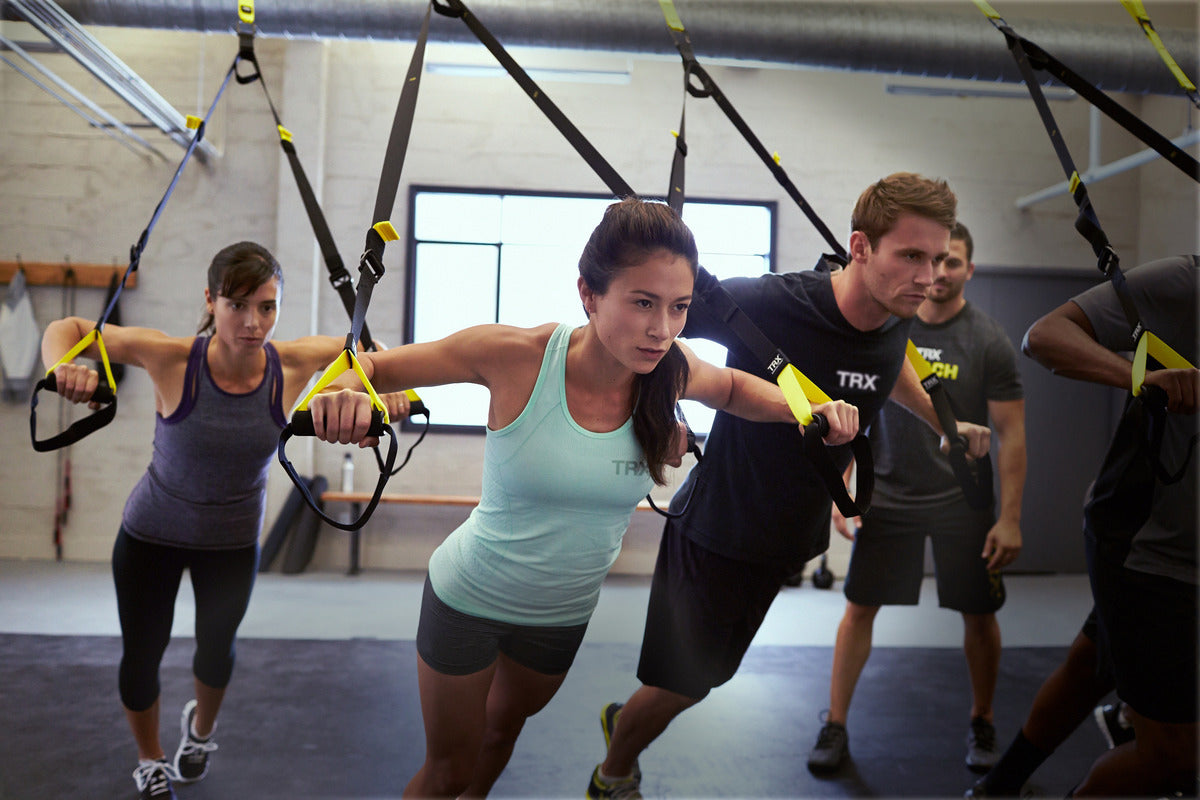Many athletes and strength trainers struggle to build muscle mass in their chest. Strength training enthusiasts and bodybuilders are constantly searching for the best at-home dumbbell chest exercises to build their pecs.
The good news is that you don't need expensive machines or a gym membership to put together a solid chest workout. A set of dumbbells is an excellent complement to barbells for a chest workout. But, you can also easily create an at-home chest workout with just dumbbells.
This blog will delve into the anatomy of your chest, the benefits of working out your chest with dumbbells, and some exceptional dumbbell chest exercises you can start doing today.
The Muscles of the Chest
Your upper body's "pushing" muscles are your chest muscles, AKA pectorals or pecs, along with the deltoid and triceps. Your pecs allow you to perform pushing movements like presses.
Pectoralis Major
The pectoralis major is a broad, fan-shaped muscle situated beneath the breast tissue. Its origins include the clavicle, ribs, and sternum, with distinct clavicular, sternocostal, and abdominal sections. All three portions converge and insert onto the humerus bone.
The pectoralis major performs three primary functions, depending on the involved segment:
- Flexion, adduction, and medial (internal) rotation of the arm at the shoulder joint (glenohumeral joint).
- The clavicular part facilitates arm flexion when it is extended.
- The sternoclavicular part enables arm extension when it is flexed
As the primary muscle mass in the chest, the pectoralis major is a key focus for building size in dumbbell chest workouts.
Exercises that target the development of the pectoralis major include:
- Push-ups
- Bench press
- Dumbbell flye
- Dips
- Dumbbell pullover
Pectoralis Minor
The pectoralis minor is a flat, triangular muscle situated beneath the pectoralis major, forming the anterior boundary of the armpit region. It originates from the third, fourth, and fifth ribs and ascends upward and laterally, inserting at the coracoid process of the shoulder blade (scapula).
The primary function of the pectoralis minor is to stabilize the shoulder blade by pulling it downward and forward against the thoracic wall (rib cage). This action is known as protraction of the shoulder blade.
Additionally, the pectoralis minor contributes to the breathing process. During inhalation, the contraction of the pectoralis minor elevates the ribs, allowing air to fill the lungs.
Exercises that develop your pectoralis minor:
- Gross stretch
- Doorway stretch
- Chest dips
- Standing flye
Other Upper-Body Muscles
The triceps, deltoid muscles, and serratus anterior are not part of the chest muscles. However, they do work in conjunction with your pectorals. Many strength training programs will work the pecs and triceps together. You’ll find that your shoulders and triceps will benefit from your dumbbell chest workouts.
Triceps Brachii
The triceps are in the back of your upper arms. Your triceps are vital for shoulder extension and stabilization during pressing movements like the dumbbell bench press.
Deltoid Muscle
The deltoid is the primary muscle in your shoulder. It consists of three parts — the anterior deltoid, lateral deltoid, and posterior deltoid. The anterior deltoid works with the pectoralis major to allow for shoulder flexion and transverse adduction.
Serratus Anterior
The serratus anterior covers the side of your ribcage. It is responsible for protraction (upward and forward movement) of the scapula and thoracic wall, allowing for overhead lifting. It also pulls your shoulder blade around the ribs, which gives you shoulder stability during pushing movements.
5 Benefits of an At-Home Chest Workout
There are many benefits to doing chest exercises with dumbbells at home, but here are just a few:
1. You’ll Improve Your Posture
Since your pectorals are one of the largest muscles of your upper body, they are vital to your posture. Spending most of your day bent over a computer will tighten your pecs. When this happens, your shoulders will round and your shoulder blades will pull forward, creating a hunched posture. Tight pecs can also decrease your range of motion for overhead pressing movements.
However, when you work out your chest regularly with dumbbells, your pectorals will be able to move properly through their full range of motion. This will help keep your body upright without pulling forward, creating a better posture. This is why it’s vital to strengthen and stretch your pecs as part of your regular workout regimen.
2. You’ll Breathe Better
Poor posture and tight (or shortened) pectoral muscles compromise your rib cage's ability to expand. When the pectoralis minor compresses, the blood vessels in your arms also compress, which can cause poor circulation, numbness, or tingling.
The pecs are sometimes referred to as "breathing muscles." That's because one of the functions of the pectoralis minor is to elevate and expand your rib cage when inhaling. This movement of your rib cage allows for full and deep diaphragmatic breathing. You're promoting deeper breathing and proper circulation by strengthening your chest muscles with dumbbell exercises.
3. You’ll Increase Your Functional Fitness
You use your pecs during most daily movements — anything that involves pushing, pulling, or carrying. These also happen to be three of the essential functional movements for daily activity. As you strengthen your pecs, you’re supporting your entire upper body. Once you’ve established a solid chest workout, everyday tasks like picking up boxes, pushing a stroller, or carrying groceries up and down a flight of stairs will become easier on your body.
Whether you're an athlete, a workout enthusiast, or simply looking to get healthier, creating a dumbbell workout for your chest is vital to your overall mobility and functional fitness.
4. You’ll Burn More Calories
Strength training and weightlifting at least twice per week to build muscle is one of the best ways to increase your calorie expenditure. That’s because muscle tissue burns more calories than fat tissue does. So as you strengthen your pecs and build more muscle, you’ll burn more calories.
A proper chest workout will involve strengthening your shoulders and arms at the same time. Consider a bodyweight push-up: this compound movement works your pectoralis major, pectoralis minor, triceps, deltoids, abdominals, and erector spinae. You're increasing your overall caloric burn by building all these muscles in conjunction.
5. You’ll Have More Breast Support
Many women avoid chest strengthening exercises because of a widespread belief that they’ll make breasts smaller. In truth, working your pectorals, which are beneath your breasts, can lift your bustline, providing additional lift and support for your breasts.
A training regimen that combines body weight exercises with resistance exercises can tone your pecs, giving your breasts a more prominent appearance.
If you want to do dumbbell chest exercises at home, consider picking up some TRX equipment today:
7 Dumbbell Chest Exercises
1. Flat Bench Dumbbell Chest Press
The chest press is a classic upper-body strength training exercise for building and toning your pecs. It’s a great mobility movement for improving daily activities like pushing shopping carts or picking up boxes. It’s also beneficial for softball, tennis, and golf athletes.
Muscles worked:
- Pectoralis major
- Pectoralis minor
- Deltoids
- Biceps
- Triceps
- Trapezius
Equipment needed:
- Weight bench
- Pair of heavy dumbbells or YBell Pros
How to do a dumbbell chest press:
- Lie on a flat weight bench with your feet on each side of the bench, flat on the floor.
- Press your shoulders into the bench by drawing them down and back.
- Hold a dumbbell in each hand with your palms facing forward. This is your starting position.
- Exhale, then press your arms up in one fluid motion. Be sure to keep your elbows slightly bent.
- Inhale, then slowly lower the dumbbells to your chest. This is one rep.
- Repeat for 8 to 12 reps.
2. Incline Bench Reverse-Grip Dumbbell Chest Press
This chest press variation uses an incline bench, which targets the pectoralis major and shoulders. To avoid straining your shoulders or rotator cuff, you should consider using a lighter weight for incline dumbbell chest presses.
Muscles worked:
- Upper pectoralis major
- Lower pectoralis minor
- Anterior deltoids
- Biceps
- Triceps
Equipment needed:
- Incline bench
- Pair of medium dumbbells or YBell Neos
How to do an incline dumbbell chest press:
- From an upright position, set your bench backward 30- to 45-degrees, depending on your comfort level.
- Sit back on the bench, holding a dumbbell in each hand and letting them rest on your knees. Position your feet on both sides of the bench and flat on the floor.
- Lift the dumbbells to the sides of your chest, with your palms facing up. Your elbows should be at about a 45-degree angle. This is your starting position.
- Exhale, then push the dumbbells straight up and in, above your pecs, using a supinated grip (palms facing up).
- Inhale, then control the dumbbells back down to the starting position. This is one rep.
- Repeat for 8 to 12 reps.
3. Dumbbell Floor Press
The dumbbell floor press has a shorter range of motion than the flat bench dumbbell chest press. At first glance, this may make it seem like an easier movement, but don’t be fooled. A heavy floor press can generate as much full-body tension as a flat bench press while reducing shoulder joint extension. Add in the fact that the only equipment you need is a pair of dumbbells, and that makes this one of the best exercises for a chest workout at home with dumbbells.
Muscles worked:
- Pectoralis major
- Pectoralis minor
- Deltoids
- Biceps
- Triceps
Equipment needed:
- Pair of heavy dumbbells or YBell Pros
- Not needed, but recommended: An exercise mat for back comfort
How to do a dumbbell floor press:
- Lie with your back flat on the floor. Keep your knees bent, with your feet flat, about hip-width apart.
- Hold a dumbbell in each hand to the sides of your body.
- Exhale, then press your arms up in one fluid motion. Be sure to keep your elbows slightly bent.
- Inhale, then slowly lower the dumbbells until your elbows touch the floor. This is one rep.
- Repeat for 8 to 12 reps.
4. Flat Dumbbell Chest Flyes
Chest flyes are a great chest day movement because they work your entire upper body. It's also a great chest opener movement, which can reduce upper back pain and tightness in your upper body. The chest flye has many variations, like incline, decline, or reverse flye.
Muscles worked:
- Pectoralis major
- Anterior deltoids
- Triceps
- Biceps
- Rhomboid muscles
- Serratus anterior
Equipment needed:
- Weight bench
- Pair of light dumbbells or YBell Arcs
How to do a flat dumbbell chest flye:
- Lie on a flat weight bench with your feet on each side of the bench, flat on the floor.
- Keep your head and back pressed to the bench throughout this movement.
- Holding a dumbbell in each hand, lift your arms above your head with your palms facing each other.
- Extend your arms out, but keep a slight bend at your elbows. This is your starting position.
- Inhale, then squeeze your shoulder blades together and lower the dumbbells in an arc motion with control until they’re level with your chest. Your arms should be laterally extended but not locked out.
- Exhale, then slowly push the dumbbells up to your starting position in the same arc motion. This is one rep.
- Repeat for 12 to 15 reps.
5. Standing Chest Flyes
This variation of the chest flye targets your chest and shoulders to build muscle strength and power. For women, standing chest flyes can also give your breasts a slight lift, giving them a larger appearance.
Muscles worked:
- Pectoralis major
- Pectoralis minor
- Anterior deltoids
- Triceps
- Biceps
- Rhomboid muscles
- Serratus anterior
Equipment needed:
- Pair of medium dumbbells or YBell Neos
- Not needed, but recommended: An exercise mat for foot comfort
How to do standing chest flyes:
- Stand on your exercise mat with your feet shoulder-width apart and a slight bend in your knees.
- Keeping a neutral spine, hinge forward at your hips at a 45-degree angle.
- Place your arms at your sides, holding a dumbbell in each hand with your palms facing each other. This is your starting position.
- Exhale, then with a slight bend in your elbows, lift the dumbbells up laterally until they reach shoulder height.
- Pause at the top of the motion, squeezing your shoulder blades together.
- Inhale, then lower the dumbbells with control back to your starting position. This is one rep.
- Repeat for 12 to 15 reps.
6. Dumbbell Flye to Press
The dumbbell flye to press is an excellent compound mobility movement that works your pectorals from multiple angles. It has all the benefits of a traditional dumbbell chest press while also giving your pecs a great stretch.
Muscles worked:
- Pectoralis major
- Pectoralis minor
- Serratus anterior
- Anterior deltoids
- Triceps
- Biceps
- Rhomboid muscles
- Trapezius
Equipment needed:
- Weight bench
- Pair of medium dumbbells or YBell Neos
How to do standing chest flyes:
- Lie on a flat weight bench with your feet on each side of the bench, flat on the floor.
- Holding a dumbbell in each hand, lift your arms above your head roughly shoulder-width apart. Keep your elbows slightly bent and palms facing each other. This is your starting position.
- Inhale, open your chest, and slowly lower the dumbbells down in an arc motion until they’re level with your chest.
- Pause at the bottom of the flye motion. Your arms should be laterally extended but not locked out.
- Exhale, then reverse the motion and bring the dumbbells back to the starting position.
- Now rotate your wrists so that they’re facing away from you. The dumbbells should be angled slightly with an open-hand grip.
- Inhale, then slowly lower the dumbbells down and out until they’re parallel to the sides of your chest.
- Exhale, then press up and bring the dumbbells back to your starting position. This is one rep.
- Repeat for 8 to 12 reps.
7. Dumbbell Pullovers
Dumbbell pullovers, also known as chest pullovers, are another great strength exercise for you to add to chest day. Not only is it an excellent dumbbell pec workout, but it’s also fabulous for strengthening your abs, triceps, and lats.
Muscles worked:
- Lower pectoralis major
- Abdominals
- Posterior deltoids
- Latissimus dorsi
- Triceps
- Biceps
Equipment needed:
- Weight bench
- A medium dumbbell or YBell Neo
How to do dumbbell pullovers:
- Start by placing a dumbbell standing up on a flat bench.
- Lie perpendicularly on a flat weight bench with only your upper back and shoulders on the bench. Your head should be off the bench.
- Plant your feet flat on the floor with your hips slightly below the height of the bench.
- Grab the top of the dumbbell with both hands and lift it over your chest. you should press your palms against the underside of the dumbbell.
- Extend your arms, but keep a slight bend in your shoulders. This is your starting position.
- Inhale, engage your core, and slowly lower the weight in an arc behind your head until your wrists are level with your head.
- Exhale, then lift the dumbbell to your starting position, keeping your arms extended. This is one rep.
- Repeat for 10 to 12 reps.
Buy the Best Free Weights for Home Training at TRX Training!
All of the dumbbell chest exercises we’ve highlighted can be done from the comfort of your home. TRX Training offers their own rubber-coated dumbbells that range from 10 lbs per pair to 30 lbs per pair.
The solid steel core gives TRX dumbbells unmatched durability that will last you years. Furthermore, the knurled textured grips give it extra hold for intense lifting exercises.
Another versatile option you can consider is the YBell. Designed to act as a dumbbells, kettlebell, and medicine ball all in one, you can diversify your chest workout completely with this innovative weight design.
Here are some things that make the YBell different from your average dumbbell.
- Comfortable Weight Distribution — With dumbbells, the weight is distributed to the sides of the handle. But with a YBell, the weight is spread all around your hand, which offers more comfort during resistance training. This is especially helpful as you increase the weight or size of the YBell in your strength training.
- Easily Switch Between One or Two Hands — The dumbbell's handle was designed for one-handed exercises, making it ideal for isolation work. With the YBell's multiple-handle design, you can easily switch between one-handed and two-handed exercises by simply changing your grip, allowing you to use it for isolation and compound movements.
- Four Tools in One — A grip change is an equipment change with YBell. This means that when you change your grip, you change the weight distribution, allowing it to act as a different piece of equipment. This makes the YBell great for compound exercises and functional fitness training.
- Better Push-up Stand Exercises — Dumbbells are often recommended for push-up exercises because they can act as basic push-up bars. However, the weight, shape, and neoprene coating of YBells make them incredibly stable as push-up stands. The top grip also offers a broader range of motion, which increases the time your muscles are under tension and your muscle development.

